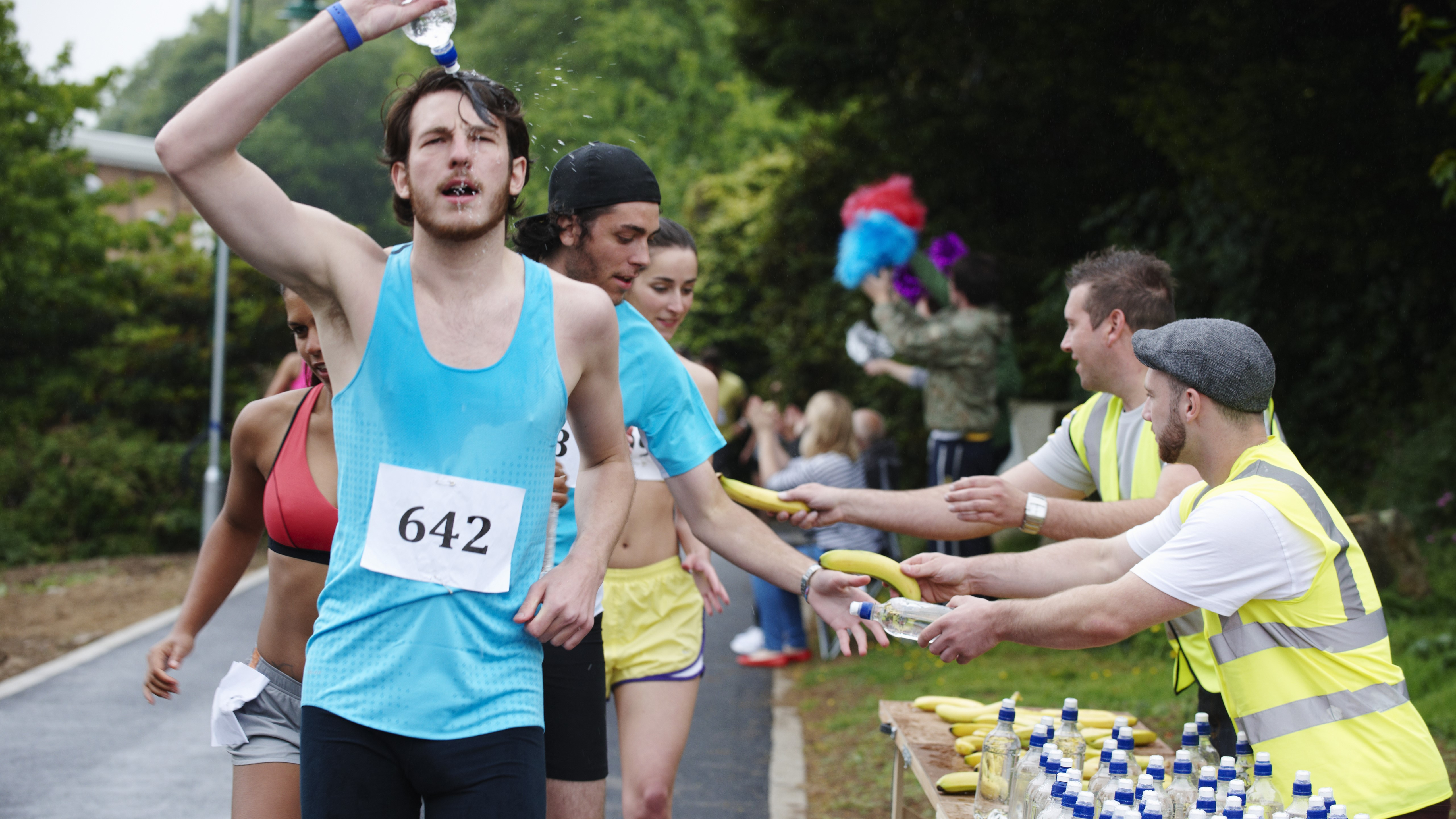
Race day for runners can bring a sudden onset of nerves and excitement, but there are lots of steps (both small and large) that you can take to make sure it all goes as smoothly as possible.
Proper preparation will ensure nothing takes you by surprise while you're on the course, whether it's knowing where to find the restrooms, having enough safety pins, or being aware of where the hills are along the course. There are also techniques you can use to keep yourself focused during the run, avoid stomach upsets, and stick to your planned pace rather than heading off too fast and burning out before the end.
With that in mind, here are 21 key tips that will help ensure your race day goes smooth as silk, and you have an amazing time on the course.
Before the day
1. Read the small print
Make sure you have read – and reread – all the race information so that you know what time to turn up, where the start is, the location of the all-important toilets (see tip four) and whether you will be in a pen for your predicted time. Planning ahead for all the small details will ensure there are no last-minute race day panics.
It's also worth taking time to familiarize yourself with the rules to make sure you're not caught out. Nobody wants to end up like the winner of the 2024 OC Marathon, who crossed the line first, but was disqualified for taking water from somewhere other than an official aid station.
2. Find a friend
Having a buddy who runs at your pace can make the miles fly by much faster, giving you welcome company and conversation. See if any of your friends are interested in signing up too. Even if you don't actually run together on the day itself, you can keep each other company during training and keep each other on track.
3. Plan your transport
Getting to the start of the race without delay and still feeling calm will be key to enjoying the full experience. Make a plan well before the race, and check websites to ensure that the public transport or car parks you plan to use are available on the day of the race. Book any necessary travel tickets as early as possible to ensure you get a seat before they sell out.
4. Check out the route
If you can, it’s a good idea to run part, or all, of the race route before the race day so that you know what to expect. Is there a hill that you need to prepare yourself for, does the road narrow at a certain point, and will you need to dodge potholes along the way? Are there areas that'll be without shade on a sunny day, or are there tunnels where you could benefit from a light?
If you can't make it onto the course in person, you might be able to check out the route in advance using a tool like Google Maps to give you an idea of what it will be like on the day.
5. Find the bathrooms
Most runners have race day nerves – and this usually means more than one trip to the bathroom. You may have to stand in line for a long time, so try to get there early to ensure you're not late for your start time.
Many organizers publish the location of bathrooms in their pre-race information for runners, so take a look and make a note in advance so you don't waste time searching for them on the day.

6. Pack the night before
Lay out all your kit and the items you will need for the race day, the night before. Trying to do this on race day when you are nervous and/or excited could lead to you forgetting important items. You don't want to turn up at the race village only to discover that you have no socks, or have forgotten the cozy changing robe you were planning to slip into after you've finished.
If you have a official race kit list, be methodical when looking our your kit and adding it to a running pack.
7. Give yourself options
Checking the weather forecast is essential, but if you're unsure how hot, cold, wet or windy the race will be, pack clothing to cover all the different possibilities so you can pick exactly what you need on the day itself.
8. Take spare safety pins
Even if you don't lose the safety pins to attach your race number to your top, you can be sure someone else will. Alternatively, you could take a bib belt or magnets to hold your number in place.

9. Don’t try new gear
Race day is not the day for wearing brand new clothes or footwear. New gear might rub and cause blisters, ride up as you run, or just feel uncomfortable. You could even suffer a serious injury if you wear ill-fitting shoes during a long-distance event. Stick to what you know is comfortable, and has been tried and tested in training.
10. Set a pace on your watch
If there are no pacers, or you prefer to run your own race, use your running watch to help you stick to your planned speed. Having all the details laid out for you ahead of the race will ease your nerves on the day.
11. Write a pace plan
The nerves of race day might muddle your brain, so it could be a good idea to have your race plan (with times for each mile or kilometer) written on your hand or arm if you don't have the details on a sports watch. You can also create a reusable pacing guide using a tool like Pace Band.
12. Charge your watch
You might prefer to run 'naked' without tech to distract you, but if you're the type of person who believes a run doesn't count if it's not on Strava, make sure you charge your GPS watch the night before.
13. Have a finish line plan
Have a plan already in place for what you all do at the finish line. Know where your kit bag will be so you can change out of sweaty or wet clothes. Arrange where and when you will meet you partner, family or friends after the race.
On the day
14. Double tie your laces
The last thing you want is for your running shoe laces to untie mid-race. This is a hassle as well as a waste off time. Make sure you properly tie your laces to maintain secure shoes for the entire race.
15. Carry your phone
It might be tempting to leave your phone at home, but it could be useful. You might want to take a few photos during the race, use it to track the event, or just use it to reach family and friends afterwards.
16. Pick a pacer
Some running races, especially larger marathons, have pacers. If you have a goal in mind, make sure you follow the right pacer. Keeping a pacer in your sights can take a lot of the mental effort out of the race, letting you enjoy yourself more. Try to find a pacer at the start and stick with them.
17. Resist a sprint start
If you have been training for a race, you will know your hoped for pace. Try to resist getting caught up in the excitement of the first 1km or 2km and running too fast. Few runners will achieve a great result by going too fast at the start of a race. Pacing is vital for a good outcome.

18. Stick to your nutrition plan
Make sure you stick to food and drink you have tested, rather than relying on whatever is available at aid stations. Some people end up getting their fuelling wrong because they switch to what is on offer along the course rather than carrying their own tried-and-tested nutrition.
19. Don’t panic
If a part of the race doesn’t go to plan, try not to panic. Panicking will only lead to further errors. Instead, think about all the training you have put in and trust that your race will go well overall, even if you have made a small error, such as starting too fast.
20. Think back
When the going gets tough, think about the miles you have run, rather than the miles you have to go. Remind yourself of the training you have completed to get to race day, and speak to yourself kindly. You're strong – you can do this!
After the day
21. Stay in contact
Keep track of post-race news, whether it’s on the race website or social media so that you can find out the results, where to buy race photos if there are any – and details of how to register for next year’s race if you want to do it again.







